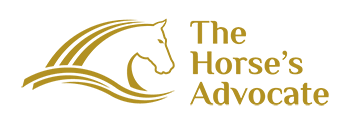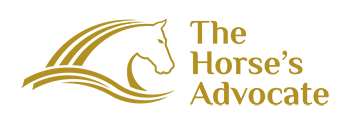
Horse Musculoskeletal Diseases – An Introduction
The bodies of all animals allow movement to find food and to reproduce through a system of bones and connective tissue. Plants do not have this ability because their roots are stuck in the ground. They can grow and spread or they can turn to face the sun or open and close their flowers but they cannot pack their bags and leave. This is where the connective tissue comes in. It is made of a skeleton or frame of bones that is connected by ligaments (bone to bone) and the bones are articulated through joints made of a fluid filled sack (joint capsule), Each articulating bone are capped with a layer of cartilage (joint cartilage) to cushion concussion from movement. Causing this movement are voluntary contractions and relaxations from groups of muscles that are attached to the bones with tendons. I prefer to call these “bone-tendon-muscle units” as each is inextricably connected as a unit, although each can have individual problems (broken bone, muscle cramp, pulled tendon). The innervation of these muscles are covered under nerves and brain. The cellular make up and nutrition of these are covered under nutrition.
Bones are divided into 2 groups: cortical and cancellous. Cortical bones join together at sutures but they don’t articulate with each other. They can articulate with cortical bones (the temporomandibular joints, vertebrae) or with a cancellous bone (hip joint). Cortical bones do not have a hollow center and are primarily made for protection of the head and they also store minerals.
Cancellous bones have marrow inside the center hollow portion where stem cells (precursor cells) form much of the blood and immune system. These bones also store calcium and other minerals as well as provide movement through support of the body weight. Mineral storage is regulated and controlled by hormones that keep the level of calcium in the blood at an exact point. If calcium levels increase or decrease from this point the horse (or human) will go into a coma and die. It’s very important this system works and vitamin D (which is no longer considered a vitamin but is now considered a hormone) is essential to this. Unfortunately there is little known about vitamin D in horses including where they get it from. In humans, sunlight is essential in Vitamin D formation with some foods being a source. But horses do not consume these foods and their bodies are covered in hair and most horses have black skin preventing overexposure to sunlight. Horses fed a lot of whole grains suffer from calcium deficiency (rickets or soft bones) so dicalcium phosphate is added to every commercial feed to prevent this.
The problems that can occur are often connected with trauma either from a direct force (break or traumatic bowed tendon) or from repetitive strain (exercised induced bowed tendon). However it is my opinion that the root of most problems with connective tissue is from poor nutrition and is discussed heavily in that subject. I believe this because of the increased in soundness issues seen today over 30 to 50 years ago. If horse survival required movement and speed, how was their survival assured if they were continuously straining ligaments and tendons? Today I see soundness issues that were not in the text books in the 1980’s such as DSLD (dropped hind patterns) and kissing spine. The topics here will discuss some of these issues.
Horse Musculoskeletal Diseases – Limb Amputation
Amputation In Horses
Horse Musculoskeletal Diseases – Ankylosis (Fused Joints)
Ankylosis (Fused Joints) In Horses
Horse Musculoskeletal Diseases – Conformation – Bench Knee
Bench Knee Conformation In Horses
Horse Musculoskeletal Diseases – Contracted Tendons
Contracted Tendons In Horses
Horse Musculoskeletal Diseases – Curbs
Curbs In Horses
Horse Musculoskeletal Diseases – Dropped Fetlocks (DSLD)
Dropped Fetlocks (DSLD) In Horses
Horse Musculoskeletal Diseases – Dropped Hip
Dropped Hip In Horses
Horse Musculoskeletal Diseases – Fibrotic Myopathy
SummaryArticleVideosRelated Material Welcome to this topic page. Right now I have not written an article and summary but be sure to check for images in the gallery. As time moves on I am adding summaries and articles, videos and podcasts so eventually there will be...
Horse Musculoskeletal Diseases – Firm Lumps Of The Limbs
Firm Lumps Of The Limbs Of Horses
Horse Musculoskeletal Diseases – Fluid Filling Of The Fetlock And Cannon Bone
Fluid Filling Of The Fetlock And Cannon Bone
Horse Musculoskeletal Diseases – Fluid Fillings Of The Upper Limbs
Fluid Fillings Of The Upper Limbs Of Horses
Horse Musculoskeletal Diseases – Hunter’s Bump
Hunter’s Bump In Horses
Horse Musculoskeletal Diseases – Interference And Overreaching
Interference In Horses
Horse Musculoskeletal Diseases – Kissing Spine
Kissing Spine In Horses
Horse Musculoskeletal Diseases – Conformation -Over At The Knees
Over At The Knees Conformation In Horses
Horse Musculoskeletal Diseases – Peronious Tertious Injury
Peronious Tertious Injury In Horses
Horse Musculoskeletal Diseases – Sidebone
Sidebone In Horses
Horse Musculoskeletal Diseases – Spavin
Spavin In Horses
Horse Musculoskeletal Diseases – Splints
Splints In Horses
Horse Musculoskeletal Diseases – Stringhalt
Stringhalt is the horseman’s term for the involuntary jerking up and out of one or both hind legs. The video demonstrates this well.
Horse Musculoskeletal Diseases – Sweeny
Sweeny In Horses
Horse Musculoskeletal Diseases – Tendon Sheath Swelling
Tendon Sheath Swelling In Horses
Horse Musculoskeletal Diseases – Thoroughpin
Thoroughpin is the horseman’s term for distention of the deep digital tendon sheath of the hind limbs.
Horse Musculoskeletal Diseases – Conformation – Toe-In And Toe-Out
Toe-In And Toe-Out Conformation In Horses
The End Of A Year – Tetanus In A Horse
This is a story about tetanus in a foal, a bacterial disease that paralyzes horses (and humans) killing them when they can no longer breathe. We vaccinate for this disease and it is almost 100% effective – if done correctly.
Horse Teeth And Oral Cavity – Dental Speculum Injury
The use of the speculum is common in equine dentistry. There are reports of damage to the horse caused by them and this is one of those cases.
Foal Diseases – Valgus And Varus Angular Limb Deformities
Valgus And Varus Angular Limb Deformities In Horses
Horse Musculoskeletal Diseases – Infected Withers
Also known as Fistulous Withers, an infection of the withers area can be stubborn and painful.
Foal Diseases – Developmental Orthopedic Disease
Degenerative Orthopedic Disease
Horse Teeth And Oral Cavity – Cheek Teeth Eruption Bumps
When the permanent premolar cheek teeth push into position, they often cause lumps that appear on the face and lower jaw. These are normal and are not painful.
Horse Locomotion And Soundness – Piezoelectric Currents
Piezo……WHAT???
Have you ever wondered why bones are not shaped like I-beams or 2×4 lumber? This short lesson on biophysics and biochemistry may actually help you understand two very important things that will keep your horse sound and why training is so important in maintaining soundness in your horse.
Step out of your comfort zone and learn about this fascinating subject.
Foal Diseases – Contracted Tendons
An excerpt is coming soon.
Foal Diseases – Epiphysitis
An excerpt is coming soon.
Horse Skin And Hair – Fascial Tears
Fascial Tears In Horses
Horse Teeth And Oral Cavity – TMJ (Temporomandibular Joint)
TMJ (Temporomandibular Joint) In Horses
Foal Diseases – Umbilical Hernia
An excerpt is coming soon.
Horse Nervous System – Shivers
Shivers In Horses
Horse Nervous System – Wobblers In Horses (Cervical Stenotic Myelopathy)
Wobblers In Horses (Cervical Stenotic Myelopathy)
Horse Genetic Diseases – Polysaccharide Storage Myopathy (PSSM)
SummaryArticleVideosRelated Material Welcome to this topic page. Right now I have not written an article and summary but be sure to check for images in the gallery. As time moves on I am adding summaries and articles, videos and podcasts so eventually there will be...
Horse Genetic Diseases – Hyperkalemic Periodic Paralysis (HYPP)
SummaryArticleVideosRelated Material Welcome to this topic page. Right now I have not written an article and summary but be sure to check for images in the gallery. As time moves on I am adding summaries and articles, videos and podcasts so eventually there will be...
Podcast #006 – The Calcium To Phosphorus Ratio
The Calcium To Phosphorus Ratio– The Horse’s Advocate Podcast #006


Responses